The Best Power Inverters for Your Car

Most brand new cars leave now the factory with USB ports inside the cabin, allowing you and your passengers to charge your mobile devices. While USB ports come in handy for daily use, they don’t offer enough power to charge larger accessories, or sometimes even quick charge phones. The best power inverters give you household AC power ands plug to charge laptop or camera batteries, and even run small appliances like a coffee maker while you’re camping, or a TV for tailgating.
There are countless devices that need more than even a 5.0-watt USB port for charging, and that’s where power inverters come in handy. Power inverters convert your car’s DC electric power into AC electric power, which can be used to power or charge a wide range of appliances and accessories. Now, you won’t be plugging in a full-sized fridge into your car, but power inverters will make your life a lot easier on the road by helping you charge or power your laptop, TV, or even a hair dryer.
Shopping for a good power inverter may seem like a fairly straightforward task, but they’re not that simple. You’ll find that there are several different types of power inverters, most of which can be plugged into your cigarette lighter receptacle or a 12-volt accessory socket. There are however, products that can be plugged directly into your car’s battery or fuse panel.
More importantly, some inverters produce what is called a “modified sine wave,” or an AC electric power that is good for most appliances—such as laptops, TVs and power tools. Keep in mind that there are some appliances that only work with “pure sine wave” AC electric power, which is basically more stable than modified sine wave. Those power inverters tend to be more expensive, but can work with basically any electric device or appliance. Before you choose a power inverter, you’ll want to check whether the device you need to be powered requires pure sine wave.
Below, you’ll find a list of our recommendations for the top 10 best power inverters currently available. We detail each product, outlining the pros and cons, to help you choose the right one for your specific situation.
For more information on the best power inverters, refer to our table of contents.
Table of contents
- 1. Editor's Pick: KRIËGER Power Inverters
- 2. Best for Lighter Electric Appliances: BESTEK Power Inverter
- 3. Best for Heavy-Duty Use: Cobra PRO Professional-Grade 3,000W Power Inverter
- 4. Best Budget Option: Duracell Power Inverter
- 5. GoWISE Power Pure Sine Wave Inverter
- 6. SUPERONE 150W Power Inverter
- 7. Stanley FatMax Power Inverter
- 8. BESTEK 200W Power Inverter
- 9. Schumacher 410W DC to AC Power Inverter
- 10. DEWALT Power Inverter
- Can I Leave a Power Inverter Plugged In?
- Do Power Inverters Drain Your Battery?
- What Does a Car Power Inverter Do?
- How Do I Choose A Power Inverter for My Car?
- Recent Updates:
1. Editor's Pick: KRIËGER Power Inverters
KRIËGER’s parent company Power Bright Technologies also makes products for companies including Energizer, so their lineup of power inverters is one of the most comprehensive on the market, ranging from 1,100 to 4,000 watts of continuous power. The company's products are modified sine wave inverters that converts 12V DC to 120V AC power and comes complete with an ANL fuse kit and three feet of battery cable. Each inverter is filled to the brim with safety features including overload, temperature, and short circuit protection. You'll also find a nice LCD display that shows you input voltage, output wattage, and battery level.
These inverters connect directly to your car's battery, so while they're not as convenient as an inverter that uses your 12v socket, it can draw more power from your vehicle's electrical system. Each model includes a pair of 2.1A USB charging ports and 2 standard North American AC outlets. An extra quiet cooling fan and UL certification from Metlabs provide comfort and peace of mind
Best of all, KRIËGER's power inverters include a three-year parts and labor warranty.
Pros | Wide range of power offerings, three-year warranty, built-in protection features, affordable, included installation kit |
Cons | Must be connected under the hood, wires could be longer |
2. Best for Lighter Electric Appliances: BESTEK Power Inverter
If you're shopping for a more affordable power inverter and don't need a lot of power, we've used products from BESTEK in our personal vehicles in the past and had no trouble with them. Offering 300 watts of continuous power or 700 watts of instantaneous power, this power inverter will provide enough juice for most light electric appliances. That makes it ideal for charging your laptop, powering an air compressor, a small TV, or even a portable fridge.
This power inverter for your car is extremely compact, and you can keep it stored in your glove box when it's not being used. It offers two 110V AC outlets and two 2.4A USB ports, and plugs into your cigarette lighter receptacle through a 24-inch cable, making it convenient to use. Safety features on this device include overheating protection, under and over voltage charging protection, and short circuit protection. There is a built-in 40 amp fuse protecting the inverter.
For durability, this product features a durable metal housing to protect it from drops and bumps, while an integrated cooling fan helps reduce heat and prevents shortages. BESTEK offers an 18-month warranty with the product.
This is a modified sine wave inverter, but the company does offer a 300 watt pure sine wave inverter if you need one.
Pros | Convenient and easy to use, two 110V power sockets/USB ports, compact design, solid build quality, built-in protection features |
Cons | Not powerful enough for heavier appliances, built-in fuse is not easily replaceable |
3. Best for Heavy-Duty Use: Cobra PRO Professional-Grade 3,000W Power Inverter
Cobra, the same company well-known for CB radios and radar detectors, has a comprehensive lineup of power inverters, with its 3,000-watt option being our pick for heavy-duty use. Offering 3,000 watts of continuous power and 6,000 watts of peak power, this modified sine wave inverter connects directly to a 12V DC battery with included 48-inch #2 AWG cables to power all sorts of appliances including microwaves, power tools, TVs, gaming consoles, and other home electronics.
The inverter boasts an LCD display that shows voltage, kilowatts, watts, and error codes. The PRO included a very convenient wired remote, and provides protection against overheating, reverse polarity and over voltage. There is an alarm and cutoff for low voltage.
On board are four standard North American AC outlets, and three-amp USB-C and USB-A charging ports. The remote includes two additional USB ports, but only comes with the 3,000 watt model.
If you don't need 3,000 watts of power, Cobra also offers several other variants ranging from 400 watts to 2,500 watts.
Pros | Will run a mini fridge or microwave, two-year warranty, four grounded AC outlets and cable remote with USB charging |
Cons | Price, isn't compatible with smaller vehicles, gets hot |
4. Best Budget Option: Duracell Power Inverter
For something more basic and affordable, Duracell offers a 175-watt power inverter that includes a pair of 115V AC outlets and 2 USB 2.1A ports. There is also an LED power light to indicate when the unit is on. Offering 175 watts, this inverter's design is similar to a power strip and includes a three-foot cord that plugs into your cigarette lighter receptacle for power.
It's not designed for powerful appliances and we wouldn't recommend a heavyn draw from both outlets at once, but you'll easily be able to charge your laptop or other less powerful devices through its AC outlets. Safety features include DC under and over voltage protection, output overload protection, short circuit protection, DC input reverse protection, and over temperature protection. This inverter has a ventilated cooling fan to help keep noise levels and heat down.
Pros | Ultra compact design, price, 2 AC outlets/USB ports, built in safety features |
Cons | 175 watts is optimistic, runs very hot at full load |
5. GoWISE Power Pure Sine Wave Inverter
If you need a pure sine wave inverter, GoWISE Power's unit offers 600 watts of continuous power or 1,200 watts of surge power. This power inverter for your car uses DC 10-16V for input and AC 120v for output and includes a starter pack of cables to connect to your battery. Safety features on this pure sine wave inverter include under voltage and over voltage shutdown, thermal protection, and overload protection.
On one side of this inverter are two 120V, 5A AC outlets at 600 watts each, and one 5.0V, 2.1A USB port. The other side houses the fan, fuse holder, and positive/negative outlets. Measuring 8.4" by 5.5" by 3" and tipping the scales at 3.7 lbs, it's a fairly compact and lightweight inverter that will power nearly all sorts of devices and appliances.
Pros | Pure sine wave option, grounded AC outlets, wired remote on/off, multiple built-in protection systems |
Cons | Needs 6 gauge direct wiring to produce full power |
6. SUPERONE 150W Power Inverter
If you don't need a whole lot of power and prefer to get something convenient, check out SUPERONE's 150-watt car power inverter that fits in a cupholder. It offers 150 watts of continuous power and 180 watts of instantaneous power, ideal for smaller electronic devices such as tablets, laptops, game consoles, DVD players, and smaller TVs. Placing it in a cupholder keeps it out of the way and secure so you can have it handy whenever you need it, and the gloss black finish looks good in any vehicle.
You'll find one AC outlet on this compact power inverter, along with a pair of USB ports and a two-socket splitter. This five-in-one design is great for daily charging of your devices while on the go. A smart cooling fan automatically kicks on when the inverter's internal temperature reaches 100-degrees Fahrenheit. The attached power cord measures 27.5 inches, and the 15A fuses are replaceable.
SUPERONE includes an 18-month warranty.
Pros | Convenient cup holder design, one AC outlet, two USB ports, two-sockett splitter, smart cooling fan, 18-month warranty |
Cons | Low power output |
7. Stanley FatMax Power Inverter
With neither bells, whistles, nor even a fan, it's no surprise Stanley's FatMaxis one of our cheapest options on the list. This is an extremely compact option that boasts a single 0.9A, 100 watt, 120V AC outlet and two 2.0A USB charging ports, using your cigarette lighter receptacle for power. It's a 140-watt power inverter, so you can't power or charge appliances. But for recharging batteries that need a wall outlet, this is great, especially for the price.
Since it is a smaller and light-duty unit, it has a fan free, silent running design. It won't drain your car's battery quickly, since it's low voltage and has an automatic shutoff feature. This product includes a mounting kit so you can conveniently install the inverter wherever you'd like. Stanley includes a one-year warranty with this device.
Pros | Extremely simple and compact, two USB ports, auto shutoff, low price |
Cons | Low amperage, voltage and wattage, single 120V outlet |
8. BESTEK 200W Power Inverter
Lighter duty and even more affordable than the 300 watt BESTEK is their more basic 200-watt power inverter. This unit provides 200 watts of continuous power or 500 watts peak power, but is a more versatile solution since it comes equipped with three 110V AC outlets and four USB ports, two 2.1 amp and two 1.0 amp pors. That makes this inverter a great option to charge or power multiple small electronic devices at the same time, such as smartphones, laptops, tablets, battery chargers, and more.
This inverter simply plugs into your cigarette lighter receptacle with a 2.5-foot cable, which is long enough so your rear seat passengers can benefit. Measuring 6.22" by 3.26" by 1.45" and weighing less than a pound, this power inverter for your car has an ultra-compact design so you can toss it in your glove box or center console when you're not using it.
Safety features on this inverter include a built-in fuse and cooling fan, low battery alarm, low battery shutdown, overload protection, and short circuit protection.
BESTEK offers an 18-month warranty with this inverter, which also comes in black if that matches your interior color scheme better.
Pros | Price, many outlets and ports, safety features, compact size |
Cons | Low power output for the number of outlets |
9. Schumacher 410W DC to AC Power Inverter
You can't really talk about automotive electrical accessories without mentioning Schumacher, which makes 16 different car inverters. Their XI41B is a compact 410 watt pure sine wave inverter, which you can plug either into the accessory/cigarette port; or clip directly onto the battery terminals for maximum power. It has a quiet high-speed continuous fan to prevent overheating, and overheat protections, a surge protector, and low battery alarm. Despite all these features, it only weighs two pounds and measures less than 10 inches.
It's protected with two fuses accessible from the back, and comes with two more spares. Schumacher says their power inverter will produce 70 watts with the engine off, and 120 watts with it on, with a maximum surge value of 820 watts. They've made several different versions of this power inverter over the years, and the current model appears to have a three-prong household plug on the front and one on the side, and a single 2.0A USB charging port (their description says one outlet and two ports, but we think it's the other way around).
Schumacher has been in business since 1947, and offers a one-year warranty on their power inverters
Pros | Well known brand and quality, battery or accessory outlet options, compact for the wattage |
Cons | Only one USB port, odd outlet placement, direct battery connection needed for full power |
10. DEWALT Power Inverter
DEWALT is an extremely well-known brand when it comes to power tools, so it's little surprise the company also offers a power inverter for vehicles. Their DXAEPI1000 car inverter offers 1,000 watts of startup and 1000 watts of continuous power, and features a pair of 120V AC outlets, and three 3.1 amp USB charging ports. Designed to power electronics such as laptops and power tools, the DEWALT power inverter has an LCD screen that displays real-time power consumption, battery status, and any faults. A comprehensive suite of safety features is built in, including automatic low battery shutdown, a low voltage alarm, and overload and short circuit protection.
Featuring a slim aluminum housing, this inverter also has integrated grommets that makes it easy for mounting and installation inside your vehicle or a tool box. Included with the inverter are battery connectors and mounting hardware, but a 12V DC accessory adapter is not included.
Pros | Triple 3.1 amp USB ports, LCD display, protective bumpers, dual cooling fans |
Cons | Not a pure sine wave inverter, direct battery connection only |
Can I Leave a Power Inverter Plugged In?
That's a big "maybe." Whether plugged into an accessory socket or connected to your battery terminals, some power inverters will go into a standby mode, just like a TV, and continue to draw a little power, even when turned off. That's fine for a few hours, or even a day, but more than one person has left an inverter plugged in and found a dead battery a few days later. Most higher end models have automatic shutoff if the battery gets low, but may still draw a little current when not We also aren't ever comfortable with leaving electronic devices plugged in and unattended for a long period of time.
You have several options for avoiding long-term battery drain:
Unplug it. We know, obvious, but also easy. However, if you have a model with fans, please let your car power inverter cool itself down first.
Find a model with zero draw when off. You may have to dig into user reviews or manufacturer documentation
Install a battery disconnect switch. This isn't a big project—they're cheap and take minutes to install. If you're permanently connecting a power inverter to your battery for work, jobsite or recreational use, you might want to have a mechanic install a remote disconnect inside your car.
Do Power Inverters Drain Your Battery?
Your car usually only uses its battery to start. After that, the alternator provides all the electricity to run the car and any accessories you have. The exception is when you have a momentary high electrical draw—for instance, if you turned on your lights and a powerful stereo at the same time, then your battery would act as a power reservoir, and supplement the alternator's output (people with very serious car audio systems may add batteries for just this reason). If your battery isn't healthy and holding a charge well, however, your alternator will be working continuously to try to charge it, and you'll have numerous problems.
If your charging system of alternator and battery is in good condition, inverters under 1000 watts should be able to run indefinitely (or as long as they're capable of, some will shut themselves off to cool after a while) with your car running. With the car off, it depends on the size of the battery, and how much you're using the inverter. Schumacher says their 410 watt inverter will provide 70 watts of power to the 110V household outlet for four hours before an average battery starts to get low.
What Does a Car Power Inverter Do?
Your car's electrical system uses DC, direct current power. Anything you plug into the wall uses AC, alternating current, and a power inverter converts DC into AC. It's not a 100% efficient process—in fact, it can generate considerable waste heat. You'll notice this in almost any power supply, including a phone charger or other power brick. The best power inverters will be 90% efficient or more, meaning they turn 90% of the DC power in into AC power out.
There's only a limited amount of power available through the 12V accessory ports inside your vehicle, which is why all of the higher power inverters need to be connected directly to the battery.
How Do I Choose A Power Inverter for My Car?
The two big questions are: What are you going to run; and where?
Small electronics like phone chargers, and even laptops, small TVS and game consoles, seldom use over 200 watts. Of course, you have to add up your draw—a 32" TV might only use 50 watts, but need 150 for startup. Likewise, a Playstation 5 uses about 70 watts turned on and idling, but could hit 200 watts peak draw. If that was your tailgate combination, you'd need a power inverter that produced 200 watts continuously, and 400 peak. We recommend adding 50% extra capacity so your power inverter isn't working so hard all the time, and you end up looking at a 400/800 watt power inverter.
Once you scale up to something like running a campsite or jobsite tools (or converting a solar array), it scales up rapidly. Small power tools and home appliances start around 750-1,000 watts, and a microwave or circular saw can easily need 2,000 watts. Time for that 3,000 watt inverter.
So you can see that your choice of whether you get a power port or direct battery connected power inverter will probably be made by your needs. Three-hundred watts seems to be about as much as you can hope for plugging into your power accessory port, and even that might be optimistic. For anything over that, plan on clipping it to your battery.
Recent Updates:
November 17, 2021: Added Schumacher 410W power inverter to recommendations. Expanded FAQ.
October 28, 2021: Replaced Energizer with Cobra Pro as Heavy-Duty pick.
December 14, 2020: Added new product recommendations
We are committed to finding, researching, and recommending the best products. We earn commissions from purchases you make using the retail links in our product reviews. Learn more about how this works.
Photo credit: Stanley

Jason Siu began his career in automotive journalism in 2003 with Modified Magazine, a property previously held by VerticalScope. As the West Coast Editor, he played a pivotal role while also extending his expertise to Modified Luxury & Exotics and Modified Mustangs. Beyond his editorial work, Jason authored two notable Cartech books. His tenure at AutoGuide.com saw him immersed in the daily news cycle, yet his passion for hands-on evaluation led him to focus on testing and product reviews, offering well-rounded recommendations to AutoGuide readers. Currently, as the Content Director for VerticalScope, Jason spearheads the content strategy for an array of online publications, a role that has him at the helm of ensuring quality and consistency across the board.
More by Jason Siu



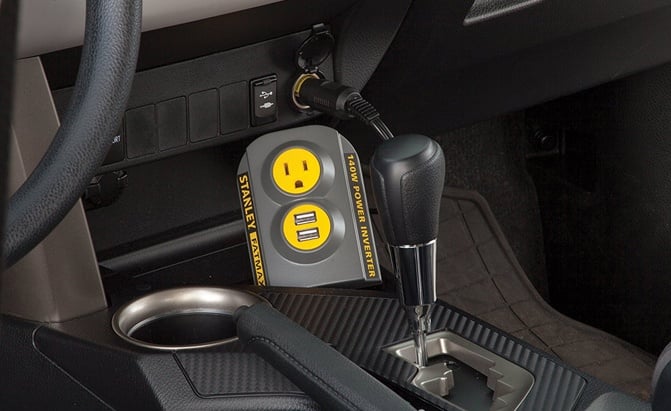
























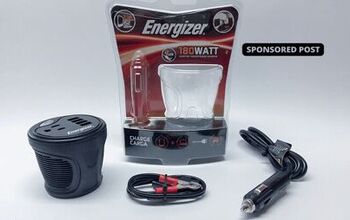
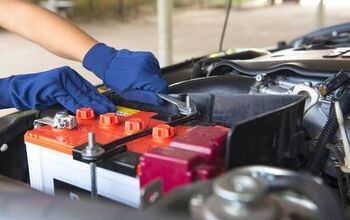
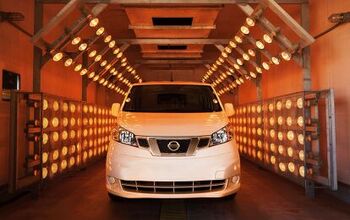

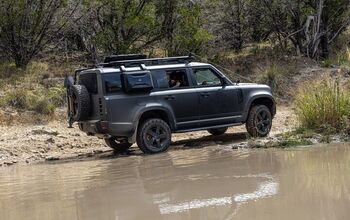
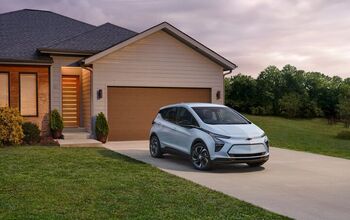
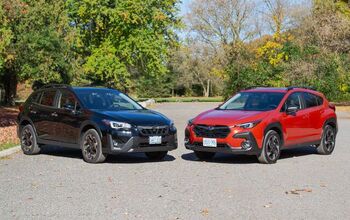
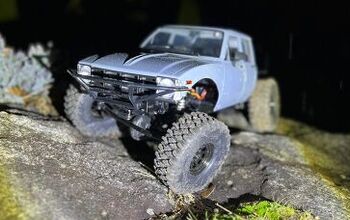




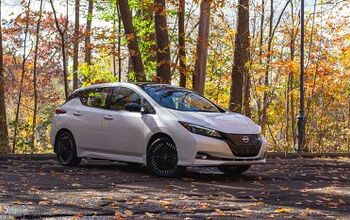

Comments
Join the conversation